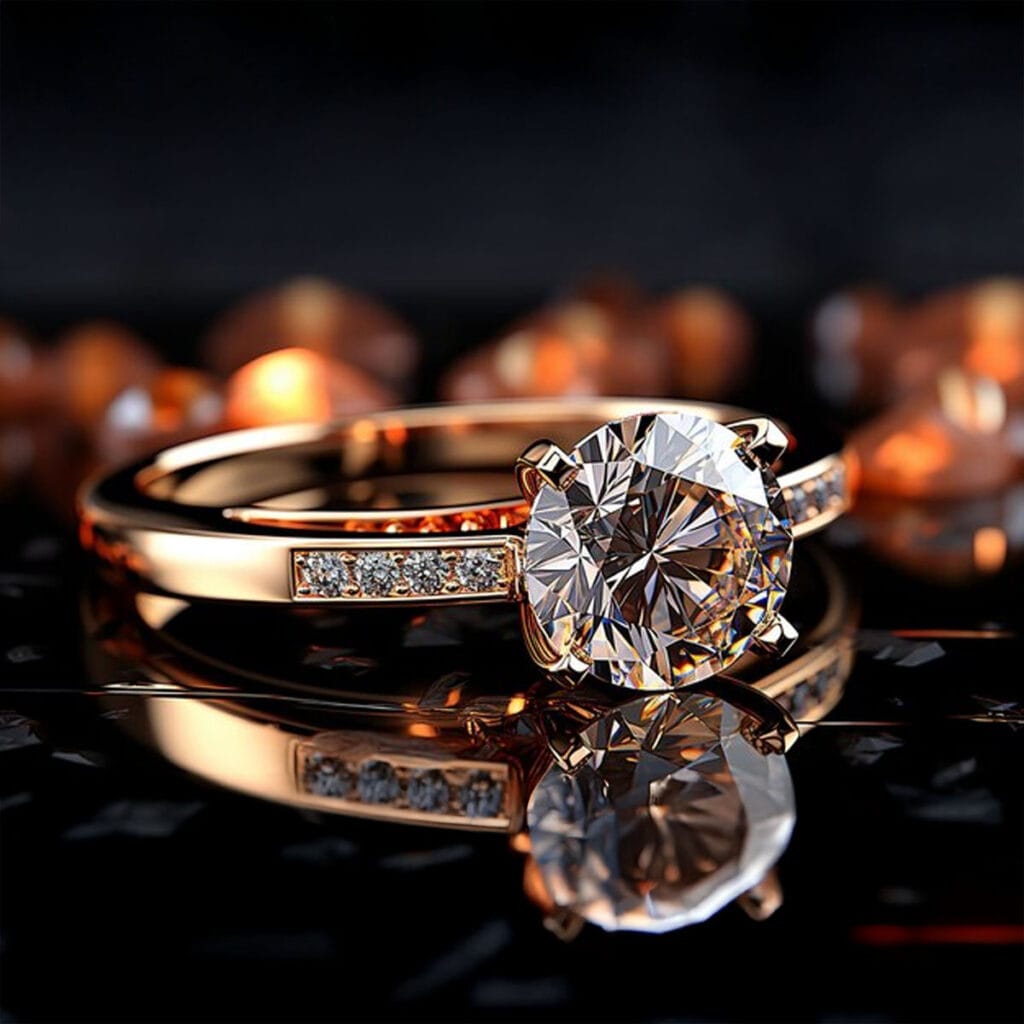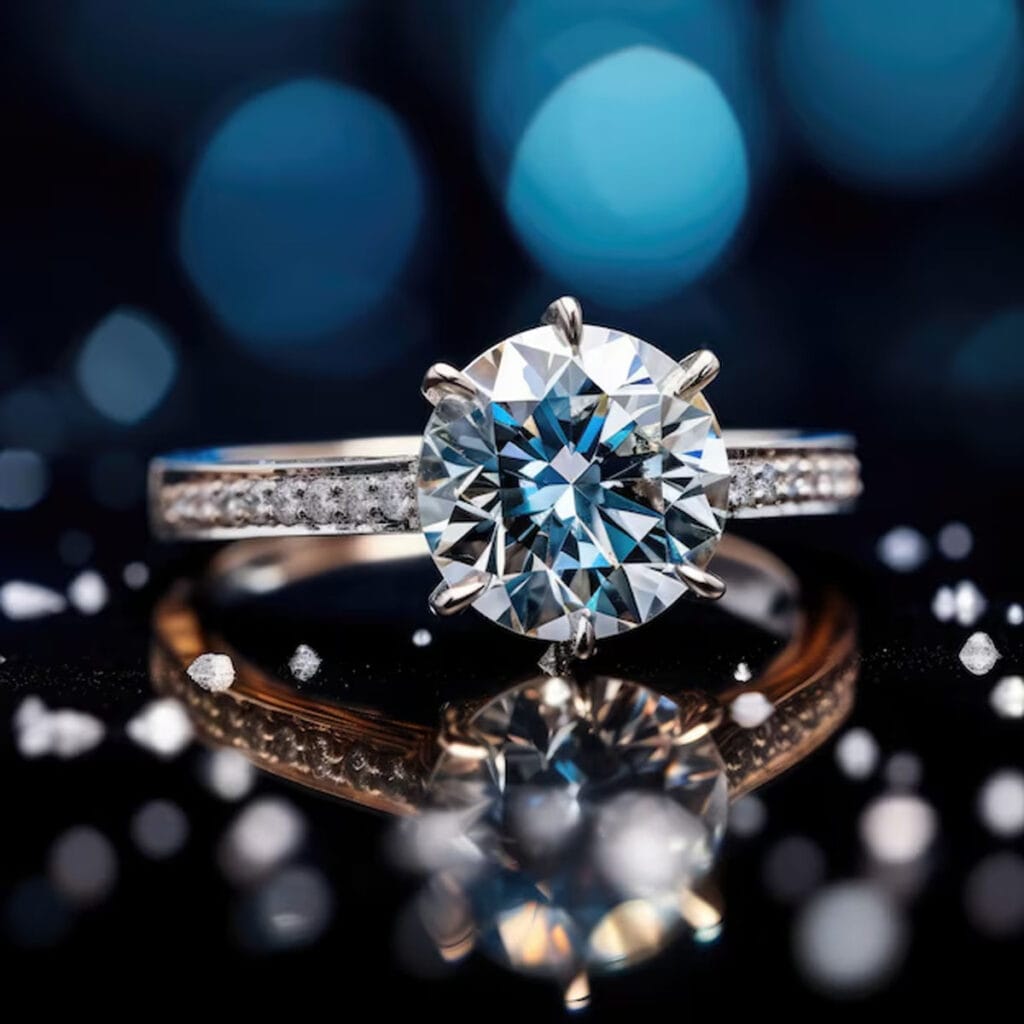Diamond rings have long been cherished for their elegance and symbolism. Whether you own a family heirloom, a recent engagement ring, or a piece bought purely for investment, understanding its worth is essential. With countless tools and factors influencing diamond valuation, it’s crucial to separate the useful from the overwhelming. This article unpacks the process of calculating your diamond ring’s value in a simple, easy-to-follow way.
Determining the value of a diamond ring starts with knowing the fundamental criteria used in the jewellery industry. Diamonds are priced per carat, but their weight is just one piece of the puzzle. Other factors, such as colour, clarity, and cut, collectively known as the 4Cs, are pivotal in defining the overall worth.
Online tools like diamond value calculators provide estimates by combining these factors with market trends. However, these calculators work best when the user has some knowledge of the grading scales and certification behind their jewellery.
Did you know? The term “carat” originates from the carob seed, which ancient traders used as a uniform weight for gemstones.
The carat weight measures the physical mass of a diamond. While it’s tempting to assume a heavier diamond always costs more, it’s not that straightforward. The value increase isn’t linear—diamonds that cross key thresholds (e.g., 1 carat, 2 carats) command significantly higher prices per carat.
The cut doesn’t refer to the diamond’s shape but its symmetry, proportions, and polish. A well-cut diamond reflects light beautifully, enhancing its brilliance and making it more valuable. Poorly cut diamonds, even if large, often sell for less.
Clarity grades assess the presence of internal inclusions or external blemishes. A flawless diamond is incredibly rare and priced accordingly, but most jewellery-grade diamonds fall within the slightly included range, balancing beauty and affordability.
Diamonds range from colourless to noticeable shades of yellow or brown, graded on a scale from D (colourless) to Z (light yellow). Colourless diamonds fetch the highest prices, while some fancy colours, like pink or blue, may defy this rule due to their rarity.
Each of these factors contributes to the 4Cs diamond valuation method, shaping a diamond’s price profile.
A diamond ring value calculator can be an invaluable tool for gauging your jewellery’s worth. To get accurate results, you’ll need key details:
When using such tools, be mindful of their limitations. They provide a starting point, not a definitive appraisal. For example, calculators may not account for niche market demand or the sentimental value attached to heirloom pieces.
While the 4Cs diamond valuation method is critical, other elements also play a role:
Understanding these nuances ensures a more comprehensive diamond appraisal.
A certified diamond appraisal is your best tool for establishing a ring’s value. Trusted institutions like GIA (Gemological Institute of America), IGI (International Gemological Institute), and HRD Antwerp issue reports that verify a diamond’s quality.
These certifications list essential details, such as the cut, clarity, colour, and carat weight, offering buyers and sellers a transparent basis for negotiation. Without certification, determining worth becomes subjective, often leading to lower resale values.
Having your diamond graded ensures that its qualities are indisputable, especially if you plan to sell it or secure insurance.
Understanding the resale value of a diamond ring can be complex, as the price a buyer is willing to pay depends on several factors. While diamonds hold intrinsic value, they rarely appreciate the way gold or other assets do. This makes it essential to approach reselling with realistic expectations.
Most buyers prioritise diamonds with clear certification and minimal inclusions. Larger stones with excellent cut grades and colourless clarity are highly sought after. However, fluctuating market trends, like a rise in the popularity of fancy shapes or coloured diamonds, can significantly impact diamond resale value.
The metal used in a ring’s setting adds to its overall value. Platinum and 18k gold often retain higher prices than silver or lower-karat gold. A simple setting might not add much resale value, but an intricate design or a recognised brand name can elevate the piece’s worth considerably.
An accurate diamond price estimate through professional appraisal is crucial when preparing to sell. Licensed jewellers or gemologists can help identify characteristics not always accounted for in online calculators, such as the condition of the stone or ring.
Fun Fact: The global second-hand diamond market is worth billions, driven largely by people upgrading their jewellery or liquidating heirlooms.


Before using a diamond ring value calculator, ensure you have access to critical information, like the 4Cs, which are often found on a diamond’s certification. If you don’t have a certificate, consider getting the diamond graded by an independent laboratory.
Online calculators provide useful insights, but results can vary depending on the algorithms they use. Compare multiple tools to get a broad understanding of your diamond’s worth.
Selling diamonds, whether through a jeweller or auction house, often involves commission fees. These costs should be factored into your final diamond resale value estimate to avoid surprises.
When selling or insuring a diamond ring, certification from reputable organisations like the GIA or IGI is invaluable. These documents detail the exact quality of your stone, offering a clear benchmark for valuation.
Certified appraisals also help protect against undervaluation when dealing with buyers unfamiliar with the jewellery industry. This ensures you’re not leaving money on the table.
Uncertified diamonds are often valued lower, as buyers have no guarantee of their quality. Even if your ring is an heirloom, obtaining professional grading can significantly improve its resale potential.
Failing to account for the latest trends, like the growing demand for lab-grown diamonds or coloured stones, may lead to undervaluation. Stay updated on these shifts to position your diamond competitively.
While personal attachment adds immeasurable worth, it doesn’t translate into monetary value. Approach resale transactions with an objective mindset to avoid disappointment.
From local jewellers and pawnshops to online marketplaces, selling options abound. Choose a channel that aligns with your priorities, whether it’s speed, convenience, or maximising value.
For unique or vintage pieces, auction houses may yield higher prices by connecting you with collectors. Sotheby’s and Christie’s are excellent choices for high-end jewellery.
When dealing with private buyers or jewellers, knowing the resale value of a diamond gives you a stronger bargaining position. Don’t hesitate to seek competing offers to ensure fair pricing.
Determining the value of your diamond ring doesn’t have to be overwhelming. By understanding the 4Cs, using tools like diamond value calculators, and seeking professional certification, you can confidently assess your jewellery’s worth. Whether you’re looking to resell, insure, or simply gain peace of mind, taking these steps ensures you’re well-prepared.
Diamonds are more than just stones—they’re investments, sentimental keepsakes, and timeless pieces of art. Understanding their value brings you one step closer to appreciating their true significance.

We invite you to visit our showroom in the heart of London’s jewellery district. Our team of experts is here to help you find or design the perfect engagement ring, whether you’re looking for a timeless diamond solitaire or something completely unique.
Find Us at 15 Greville Street, Hatton Garden, London EC1N 8SQ.